Project History
- Amax Gold Inc., a subsidiary Amax Inc., bulk mined Hayden based on a shallow, disseminated mineralization model.
- Historic drilling was limited in scope and depth: 742 holes (327,514 ft), avg. only 441 ft (<150m).
- Approximately 480,000 ozs of gold and 1.3 million ozs of silver were recovered.
- Amax Inc. merged with Cyprus in the mid-1990’s which led to the shutdown of Hayden’s operations to focus on copper and molybdenum projects.
- Kinross acquired Amax Gold in 1997 focusing on three properties, two to develop and one to mine. Kinross did not explore Hayden.
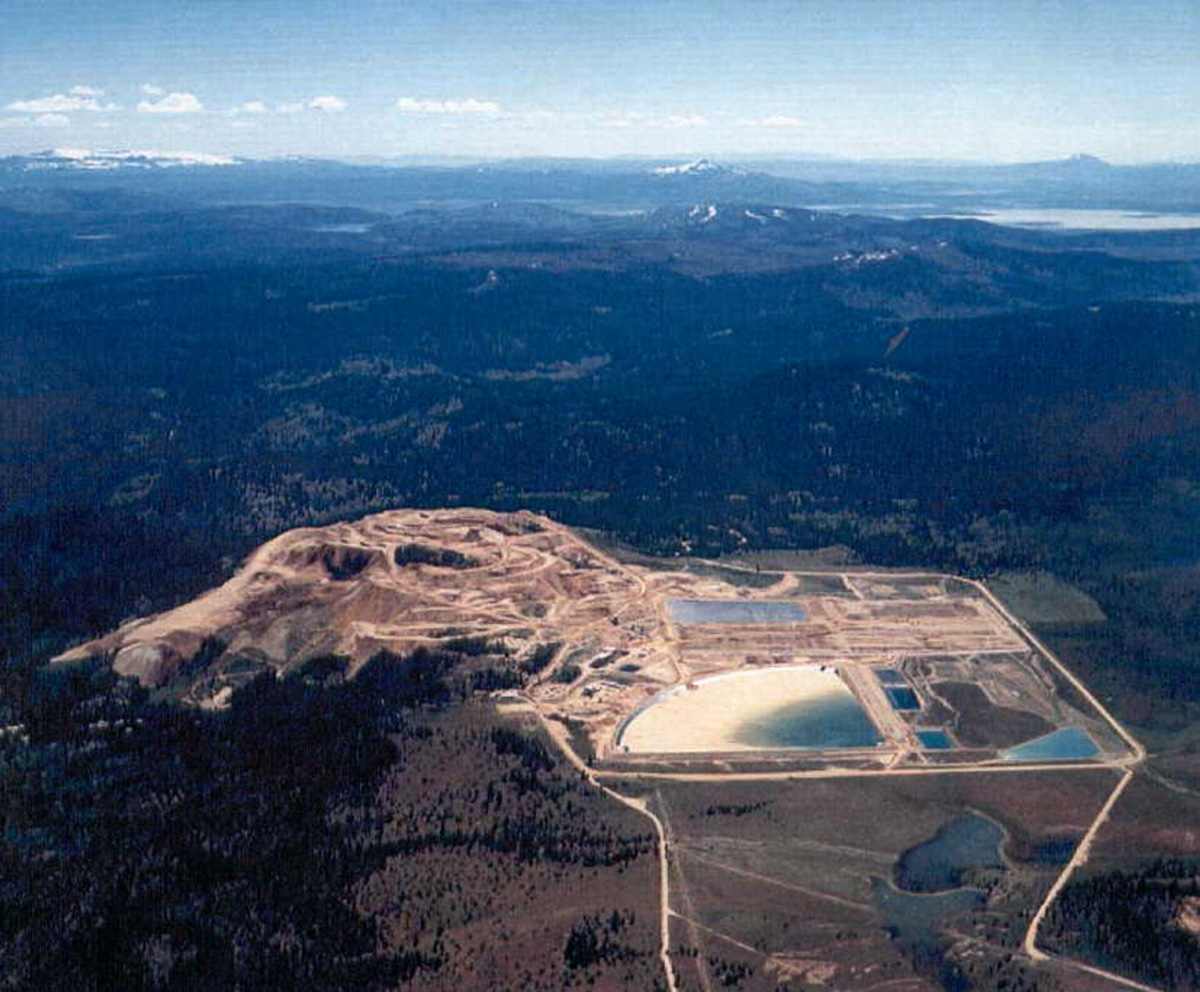
Project Highlights
- Hayden has not been drill-explored for 27 years.
- During this period, exploration techniques and understanding of the Low Sulfidation deposit model have significantly evolved.
- The Four Nines geological team, through 3D modelling of all available data, has determined that Hayden gold mineralization is structurally controlled.
- The core of Hayden Hill property is comprised of private lands.
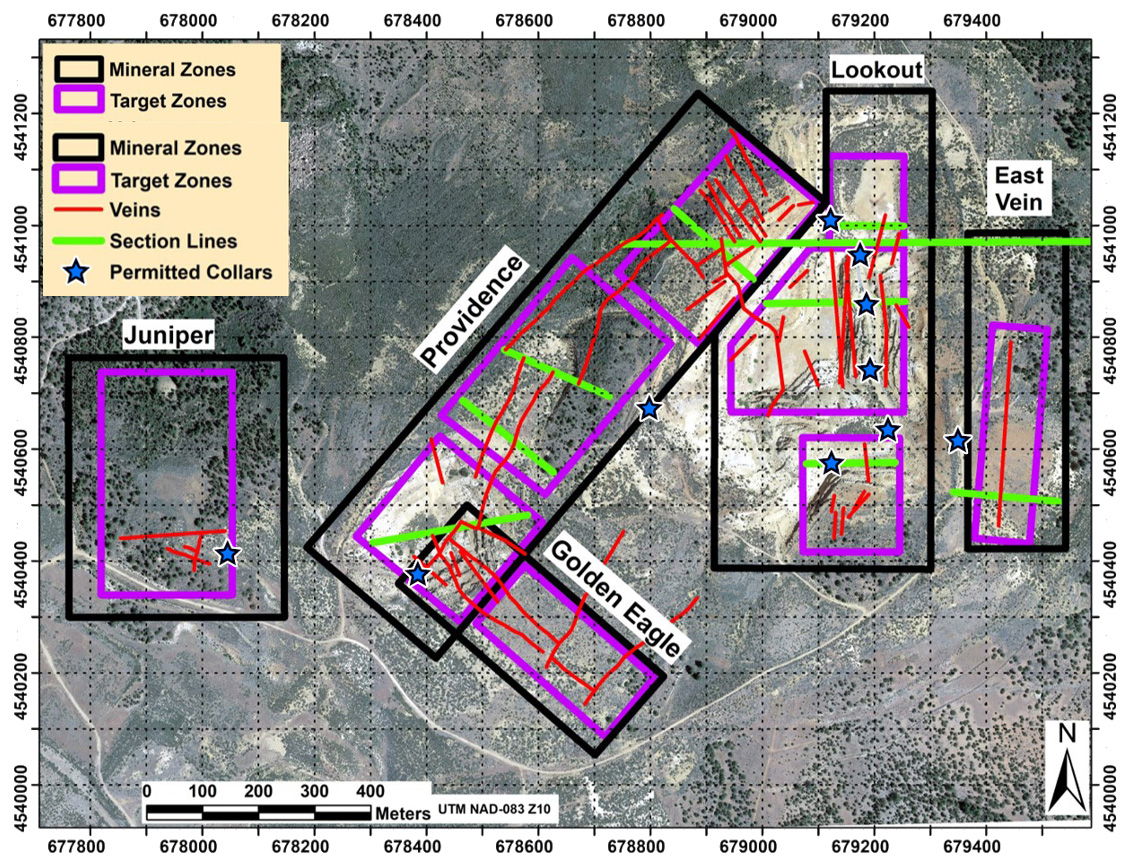
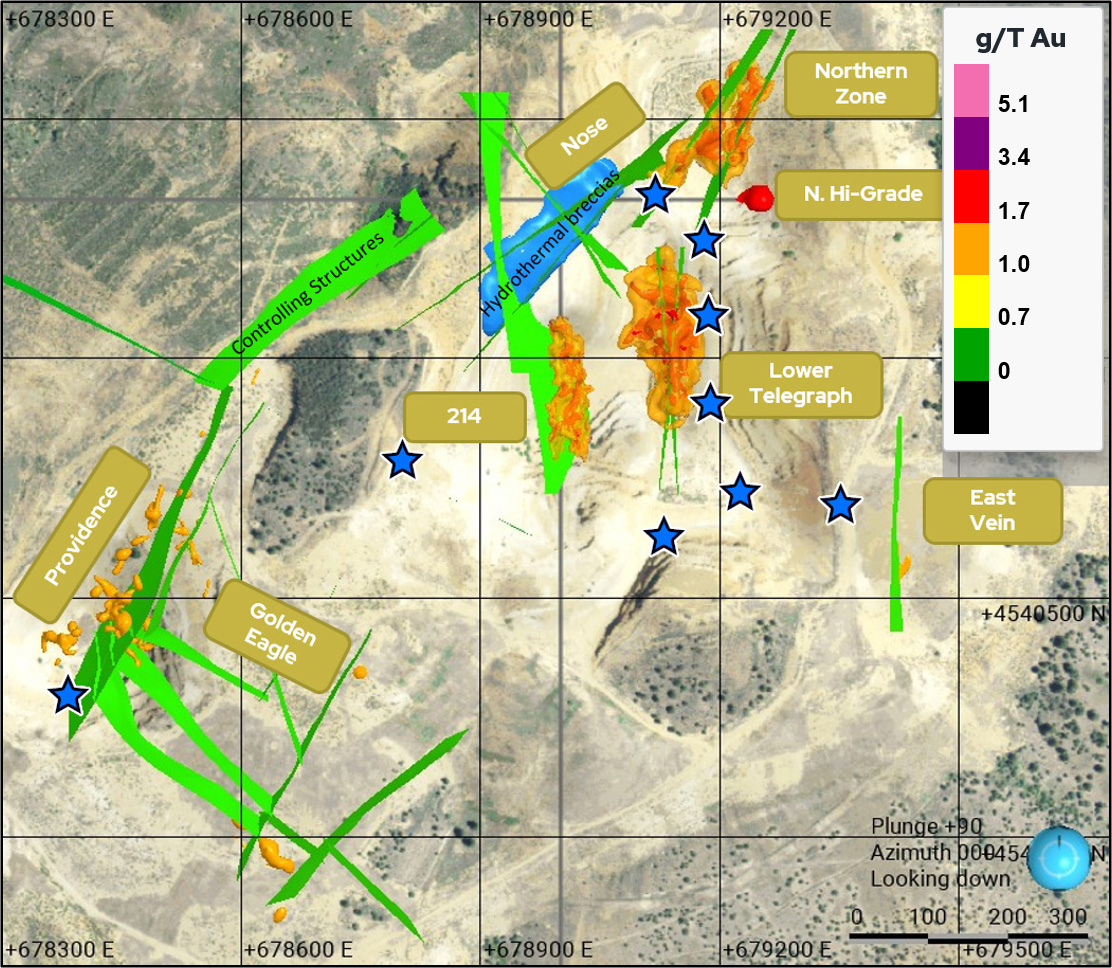
3d Modelling
Four Nines has created a comprehensive 3d modelling of all available data sets for Hayden Hill:
- Grade shells for historically mined mineralization generated
- Shells envelope > 75% of mineralized drill intervals and surface samples
- Mapped epithermal banded veins (green color in subsequent slides) and hydrothermal breccia bodies are present in the core of most of the modeled zones – strong structural control
- Data-indicated mineralization present beneath the current pits
- Geologically-indicated extensions to mineralization also modeled (blue shape)
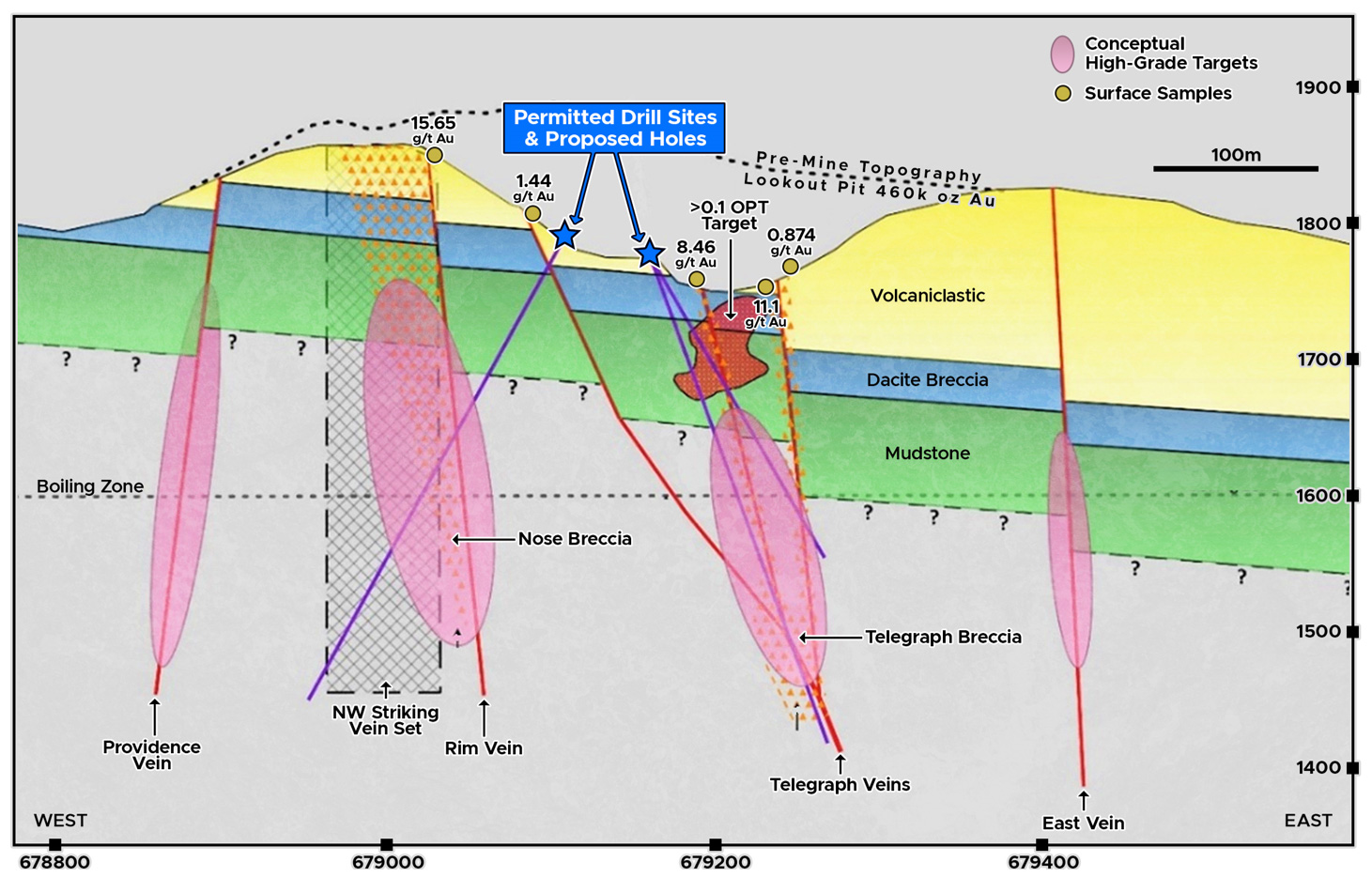
The Plan
- Opportunity: Our expert geological team has applied an advanced understanding of Hayden Hill geology, and the low sulfidation deposit model, to identify significant potential of undeveloped gold and silver mineralization.
- Objective: Drill to confirm a data-driven understanding of significant mineralization below and peripheral to the current pits and revive a past-producing gold and silver mine.
- Approval: 10 sites at < 10 acres total new disturbance for up to 25,000 feet of PQ core.
- Drillhole Plan: Target potential high-grade feeder zones identified by integrating surface mapping and sampling results with modelled historical drill data.
- Environmental Considerations: Maximize current infrastructure and minimize new disturbances.
LOOKOUT PIT
- Significant pit production by Amax
- Multiple discrete mineralized veins
- Multiple exploration holes with intact mineralized intercepts
- Excellent access on historical ramp
- Multiple permitted drill sites
Targets
- Historical drilling with high-grade intercepts
- Northerly trending structures to depth and breccia bodies
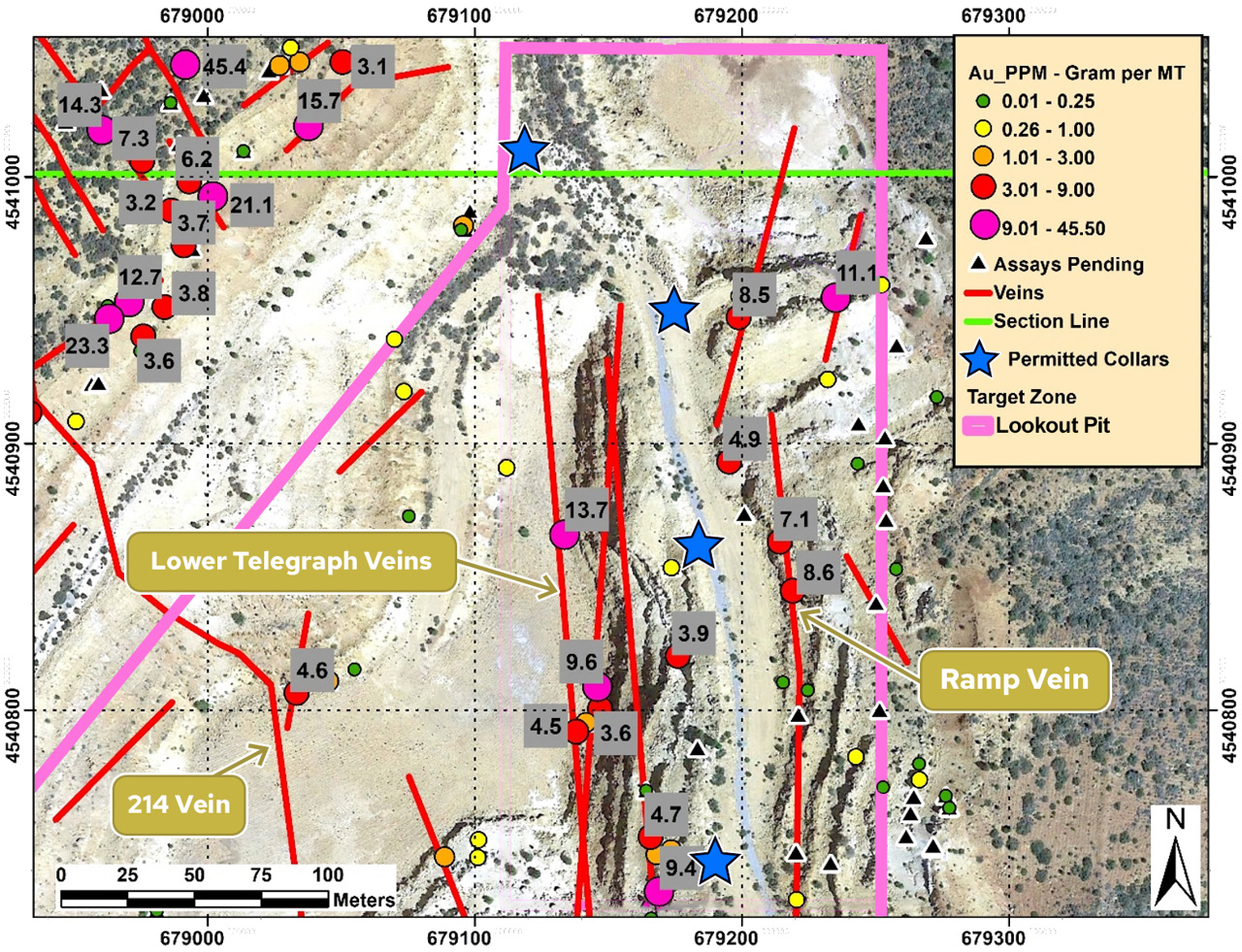
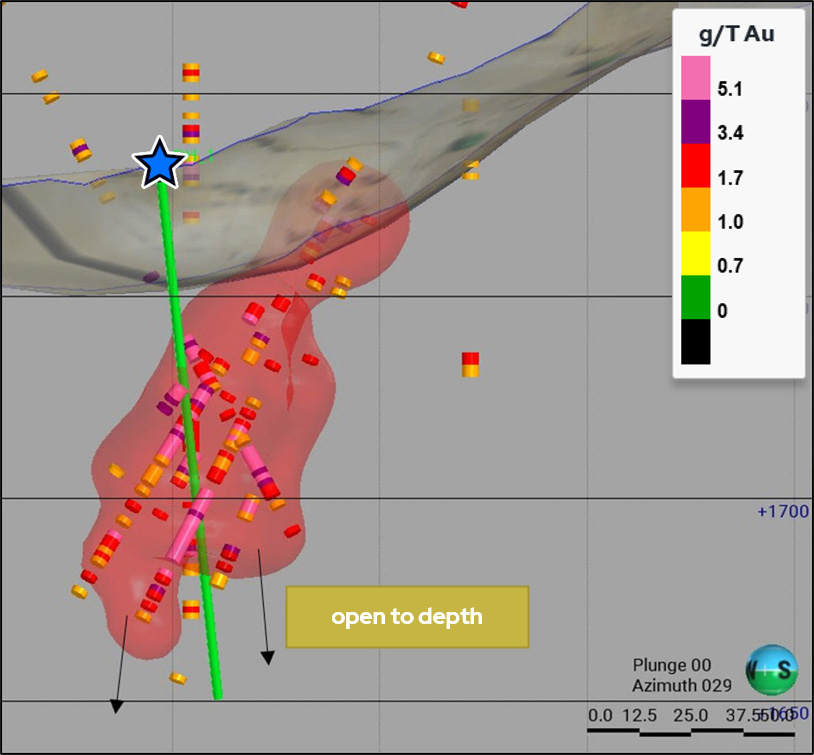
NORTHERN HIGH-GRADE TARGET
- High quality target
- Multiple historical exploration holes indicate strong targets beneath the current pit
- Proposed drill hole indicated in green
- Open to depth
Targets
- Northerly trending veins
- Drill-indicated mineralization beneath the pit
- High-grade
LOWER TELEGRAPH TARGET
- High-quality, data driven drill target beneath historical pit wall
- Drill targets are deeper extensions of the controlling veins and breccia
- Proposed drill hole shown by green line
Targets
- Two prominent parallel northerly trending mineralized structures
- Projected feeder zone at depth (blue)
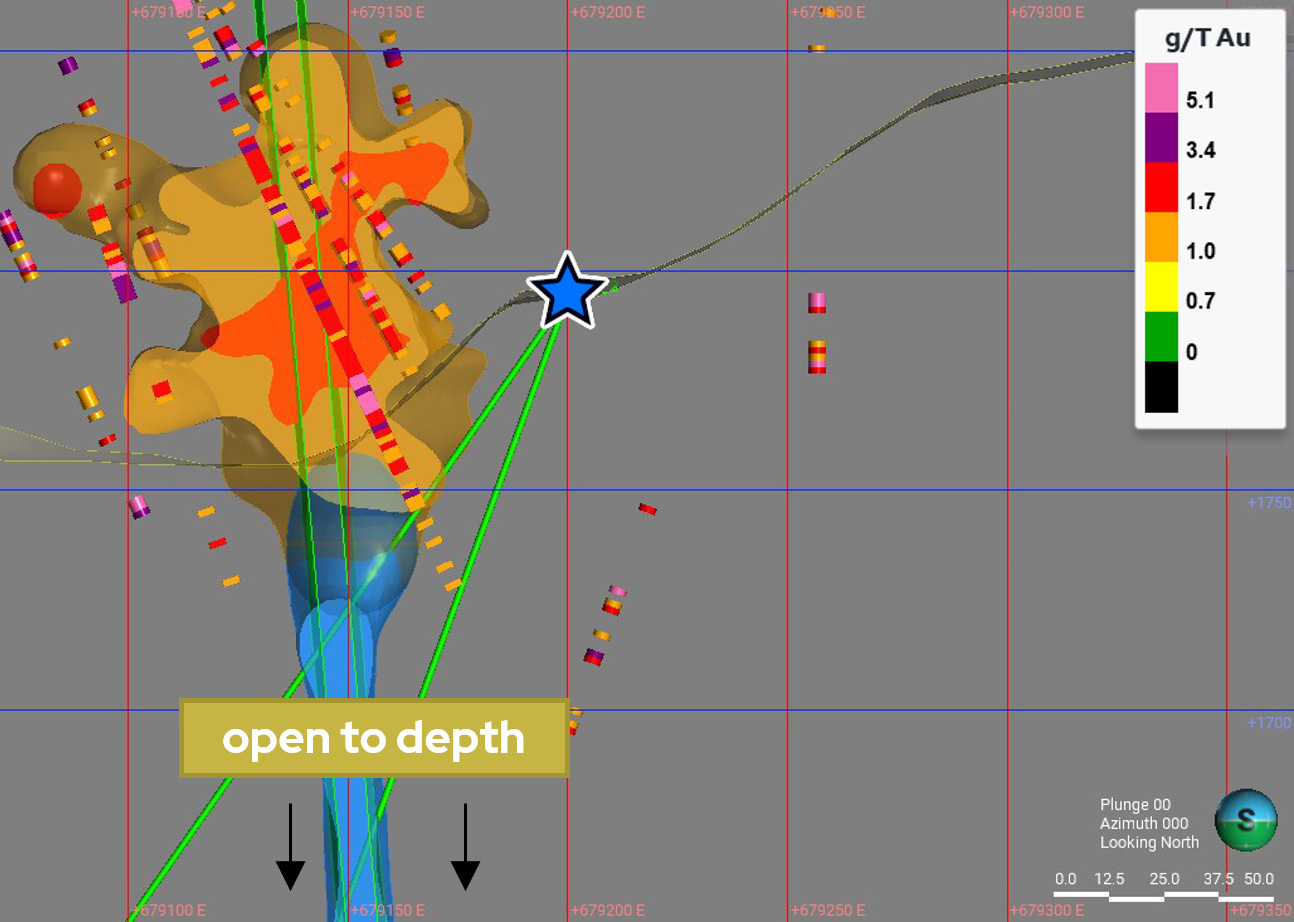
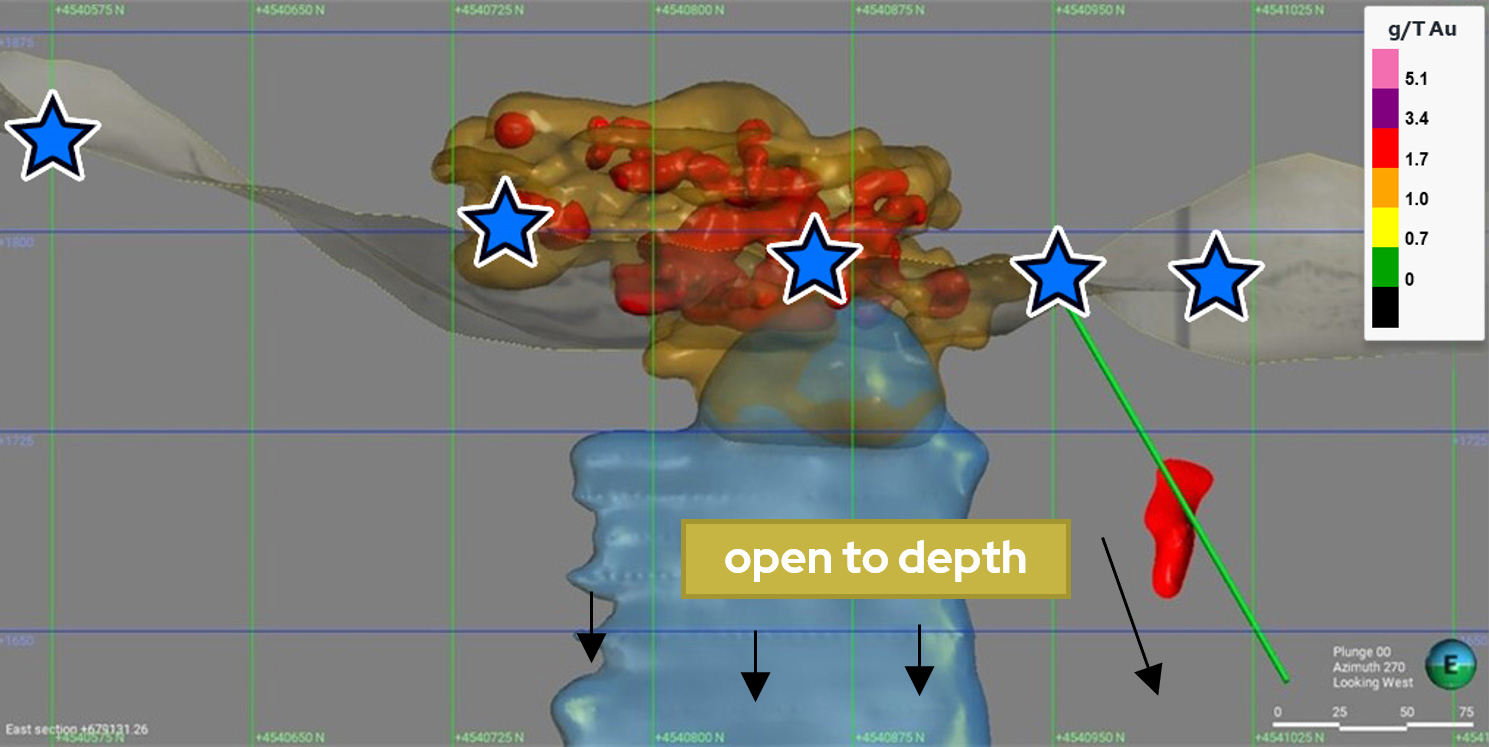
NOSE TARGET
- Highest surface gold grade 45.4 g/t
- Numerous high-grade values from surface samples
- The Nose Zone can be drill-explored, at depth, from a location at the bottom of the Lookout Pit
- Historical exploration mineralized intervals correlate well to the modeled vein surfaces
- Main NE trending vein set intersected by NW trending veins
- Historical exploration mineralized intervals correlate well to the modeled vein surfaces
- Hydrothermal breccia bodies (blue) along, and at intersection of veins
- Numerous high-grade values from surface samples
- Permitted drill site to explore at depth
Targets
- NE trending veins to depth
- NE-NW vein intersections to depth
- Hydrothermal breccia bodies
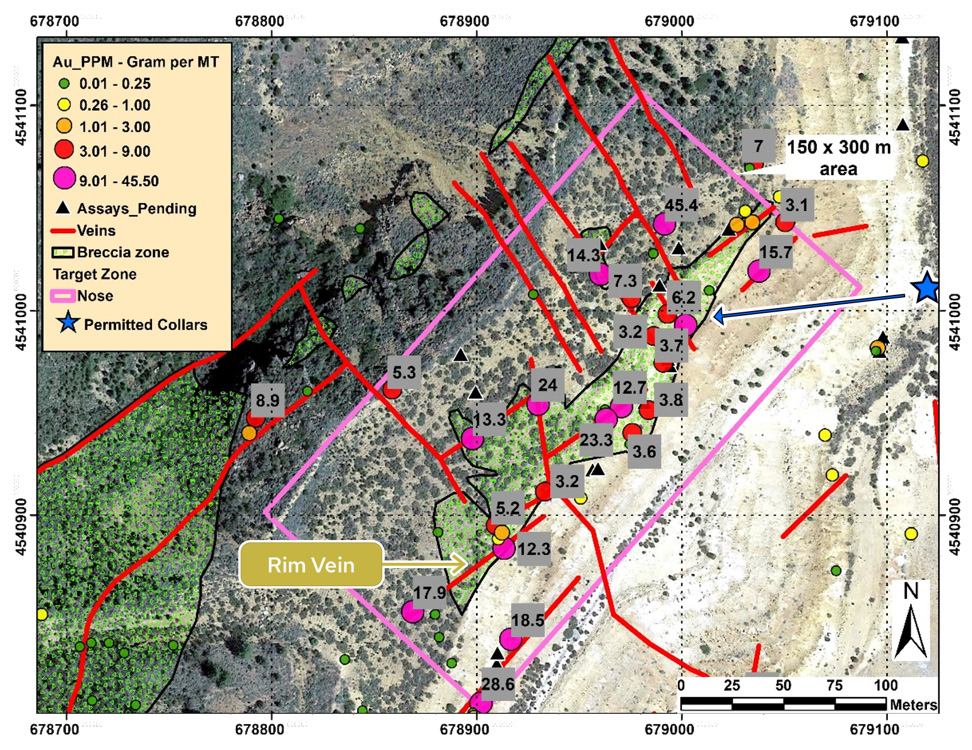
PROVIDENCE PIT
- Highest gold value for the Providence Zone is 37.9 g/t
- Hayden Hill historical underground production was from the Golden Eagle veins (i.e., 4 – 7 meters wide with gold grades up to 30 g/t)
- One (1) drill station to explore the intersection of the Providence and Golden Eagle zones
- Permitted drill site to explore at depth
Targets
- NE trending veins to depth
- NE-NW vein intersections to depth
- Hydrothermal breccia bodies
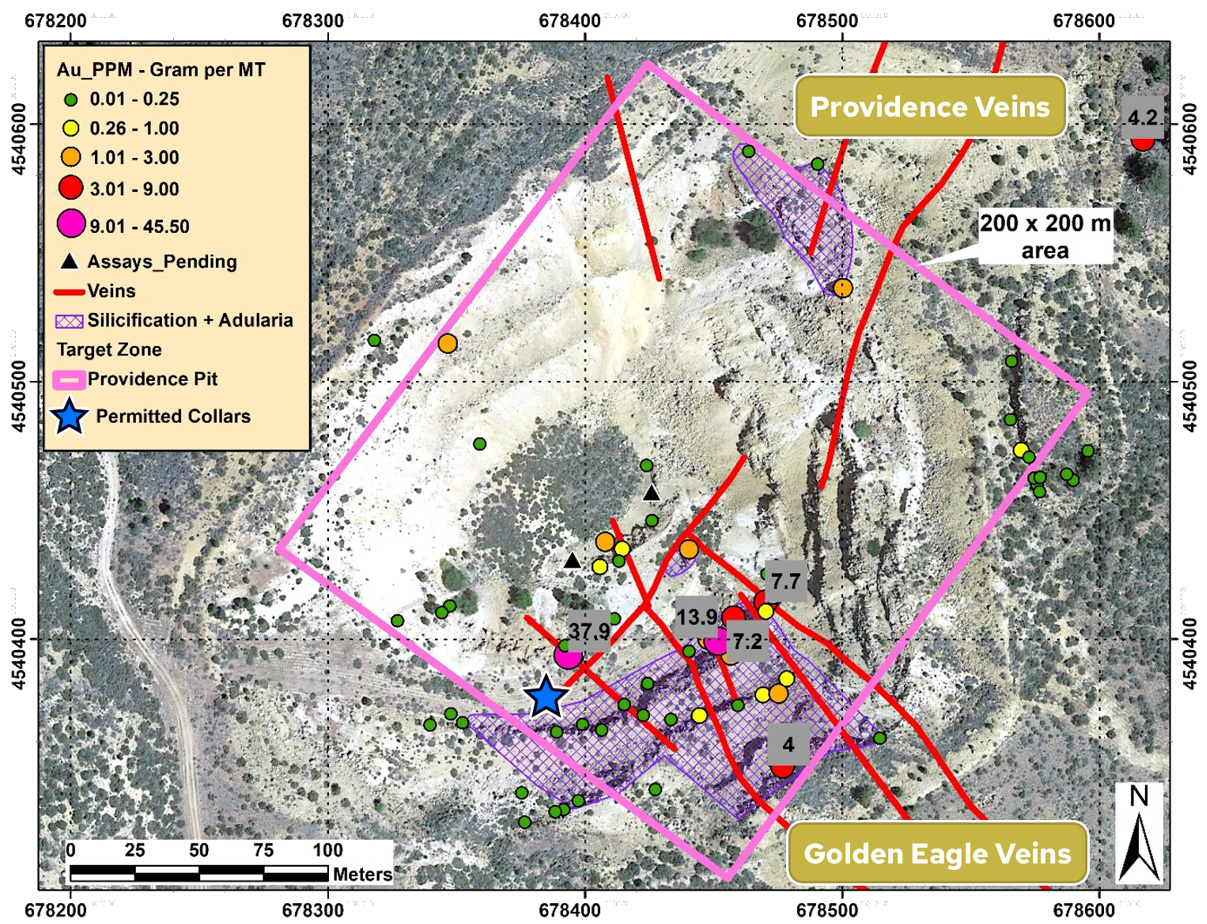
Project Image Gallery
Maps & Figures









